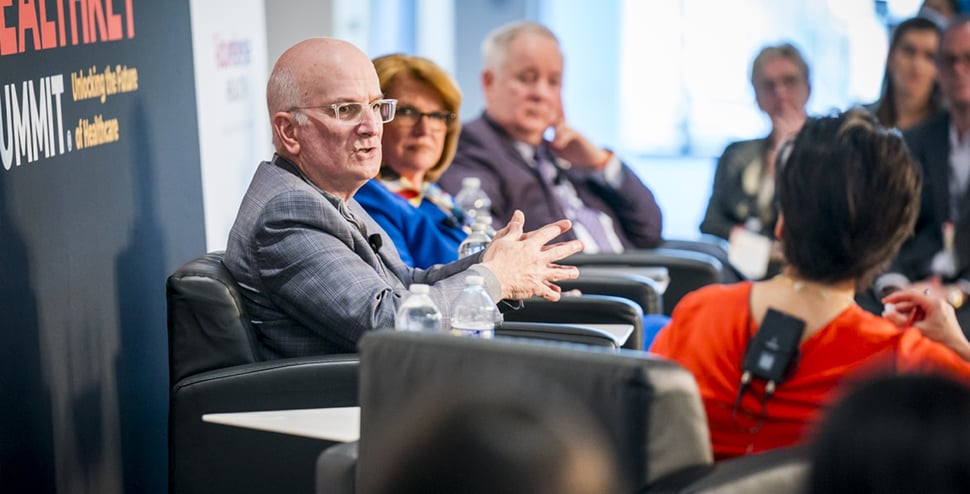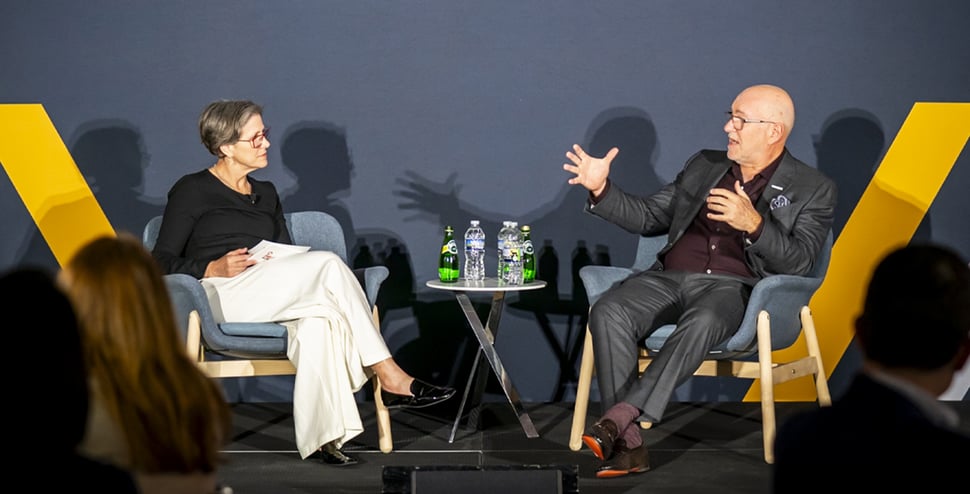Foster trust, engagement, and credibility through a compelling brand.

Every executive is a brand builder and a company ambassador. Your strategy, expertise and leadership are at the heart of your organization, and key stakeholders — from employees to investors — are looking to you to get a read on how the company is really doing.
These days, of course, the fastest way to do that is to pull up your social media pages or Google your name — and it’s up to you to be intentional with what they find. For executives, an effective online presence is one that establishes credibility and leadership while reflecting your personal and corporate values.
At its core, executive visibility is about trust, not the limelight. Displaying your leadership online helps stakeholders get to know you, become familiar with your thinking and decisions, and begin to trust you. That’s the critical reservoir of goodwill you draw on when you’re making a big change, facing tough times or trying to sell the public on an innovation.
Establishing yourself online as an insightful, approachable leader starts with authentically blending personal and professional experiences in your narratives.
What Stakeholders Want:
Generosity. Social platforms shouldn’t be simply transactional, or a place to re-share company news. Instead, take the time to write thoughtful posts — even just a few a month! — to share your insight and perspective. This will build your brand while furthering knowledge sharing in your industry, and it will help foster genuine engagement on social media. Many leaders share wisdom from colleagues and peers to extend someone else’s conversation or visibility. That generous spirit reflects positively on themselves and their companies.
When Kevin Mahoney, CEO of the University of Pennsylvania Health System, posts to his more than 12,000 followers on LinkedIn, he’s often highlighting the impact of employees or corporate partners. He’ll share his perspective on healthcare and company announcements, but the posts praising others — like a dedicated NICU nurse — show his unique character as a leader.
 Kevin Mahoney, Madeline Bell and Jack Lynch with moderator Fawn Lopez at the 2024 HealthKey Summit
Kevin Mahoney, Madeline Bell and Jack Lynch with moderator Fawn Lopez at the 2024 HealthKey Summit
You. Your executive brand is so much more than a social media account — it’s the overarching, cohesive story you tell in media interviews and thought leadership pieces, which carries through to social media posts and in-person interactions.
We know that audiences are captivated by stories, and that personal anecdotes are often remembered far longer than the point they were illustrating. Use this to your advantage by taking the time to think about your personal values and how they shape your approach to leadership. Consider how they support the company’s mission and vision. Then, keep your eyes open to the everyday stories and moments that reflect those values. Those are the stories to weave into your communications.
Consider Karen Lynch, who took over as CEO of CVS Health during the pandemic. In one interview with The New York Times, she shared that her aunt’s wisdom kept her grounded in the midst of making tough calls:
“The reason I’m as decisive as I am is because when I was growing up, my aunt told me that you were going to have to make decisions in your life, and you’re going to have to live with those decisions right, wrong or indifferent,” she told the news outlet. “When you make decisions as often as I do, you’re going to make a bad call. You just have to readjust.”
With one quick quote, she connects her leadership style with personal values and builds trust in her ability to make decisions, accept ownership and pivot. That’s the power of story.
Reliability. An executive’s personal channels can be a tremendous advantage in a crisis or major change. Regularly posting on a platform such as LinkedIn gives you the platform and the audience to directly connect with many of your stakeholders when needed — with speed, scale and trust.
 Steve Collis and Kelly McBride at the 2024 HealthKey Summit
Steve Collis and Kelly McBride at the 2024 HealthKey Summit
Steve Collis, the Chairman, President & CEO of global healthcare company Cencora, frequently discusses advances in healthcare and celebrates the organization’s culture and achievements to a wide audience on LinkedIn. As a result of this steady engagement, key stakeholders are already tuned in to the company’s next announcement.
Today’s public square is online. It’s where opinions are formed, judgements are made, and news spreads quickly. As an executive, you can use this to your advantage by building a personal presence that connects with your audiences and enhances your company’s reputation, benefiting the entire organization.
Check out our recap from the HealthKey Summit here for more comments from healthcare’s leading executives.